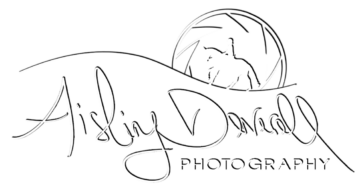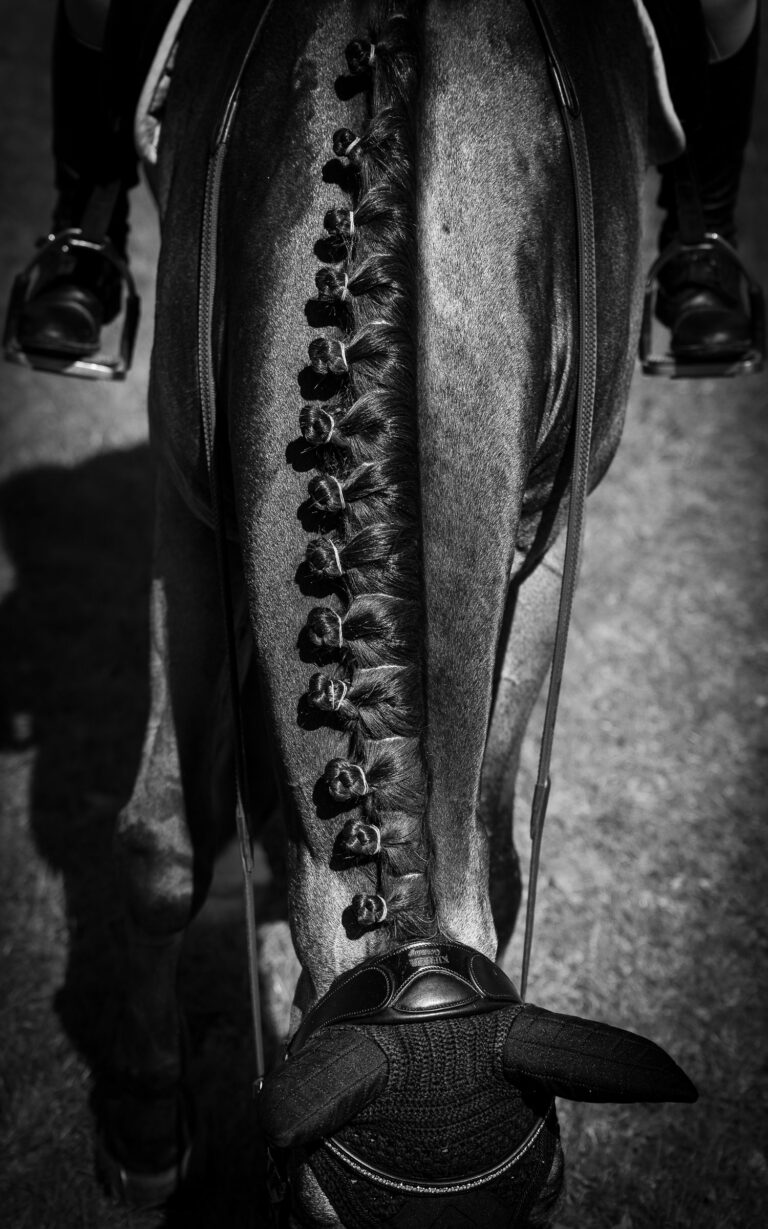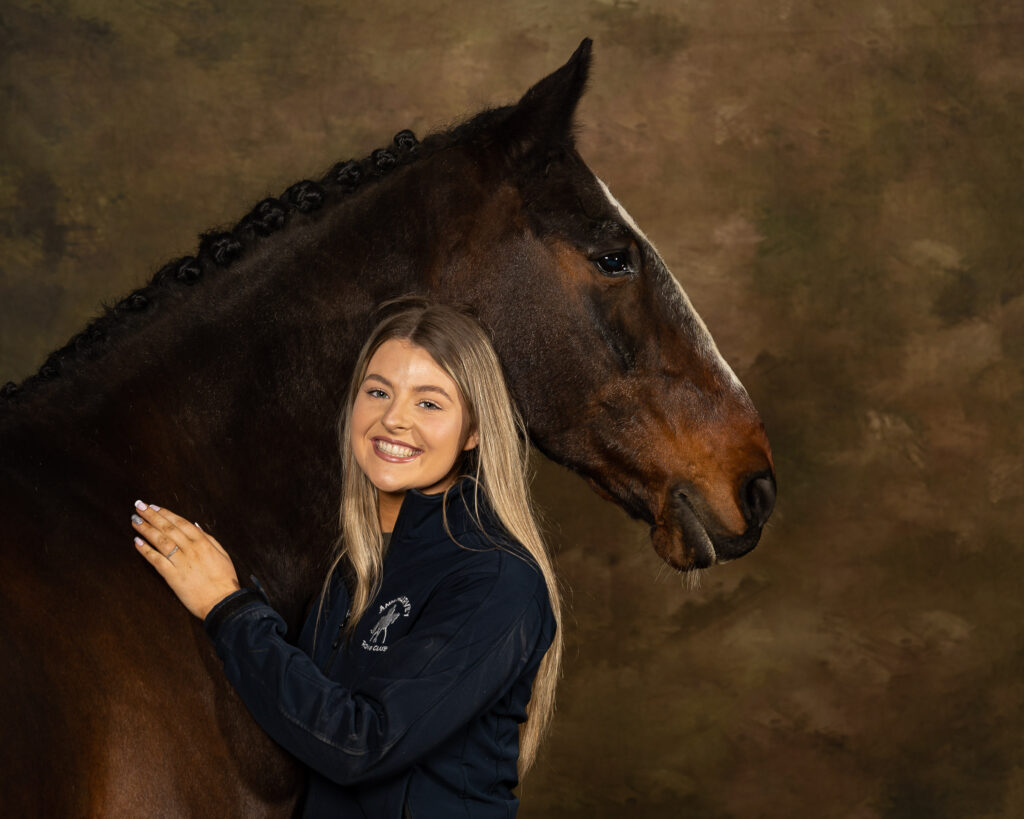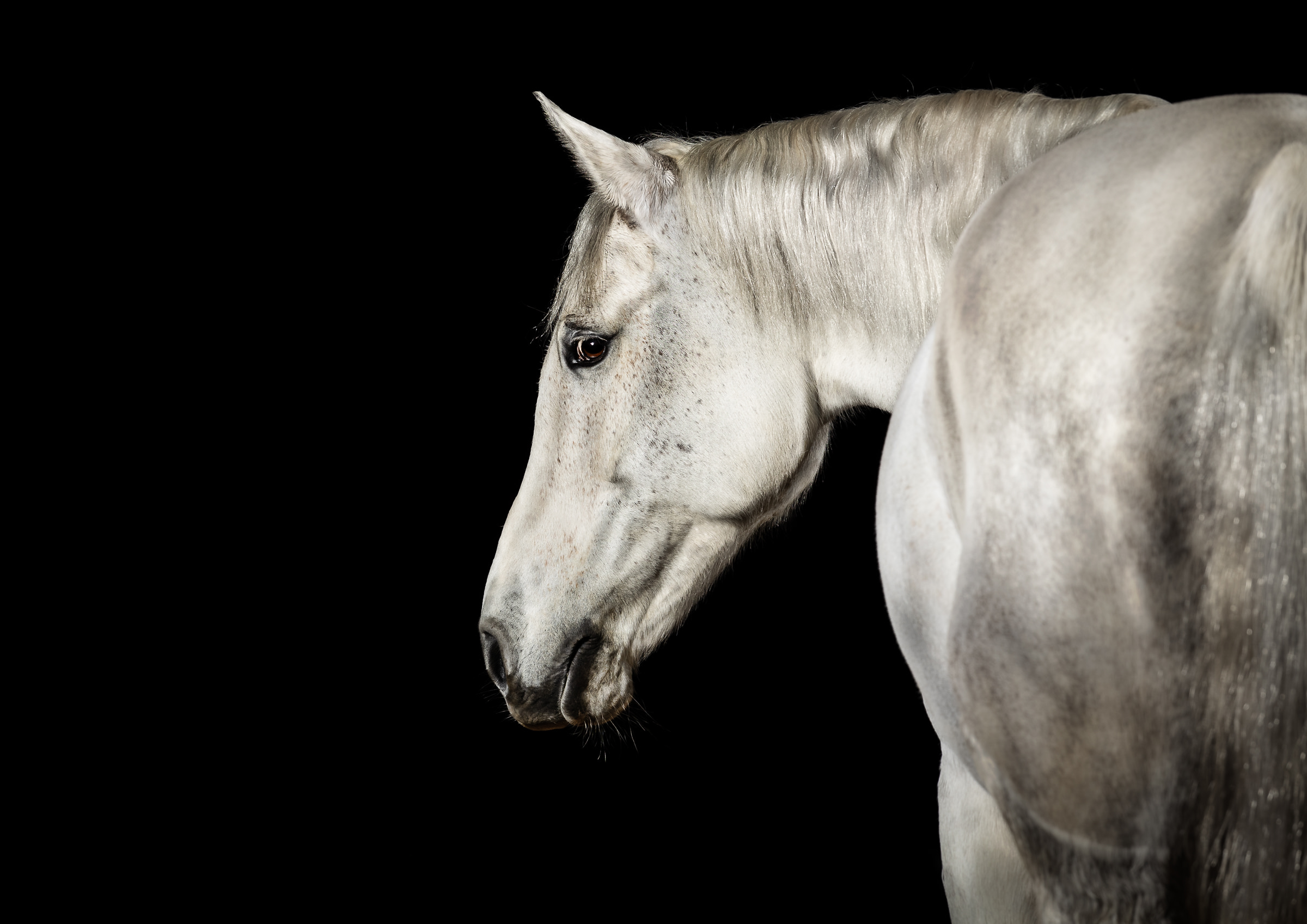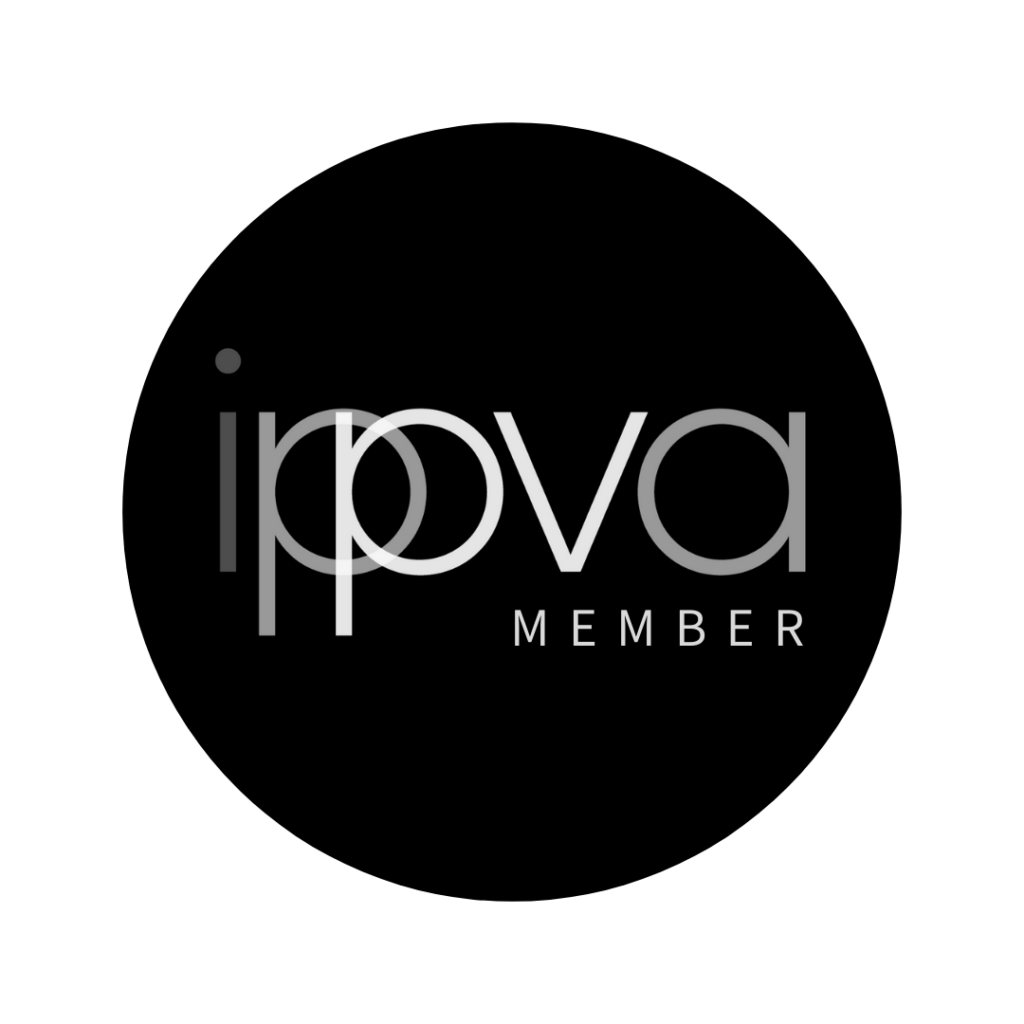
Choosing Tack
Attention to detail is really important for that perfect shot. Tack should be very clean and fit well. Please ask in advance if you would like any advice or think a part of your tack may not be suitable. I have a variety of bridles, nosebands and browbands you can borrow if your own bridle is unsuitable.
For most horse a simple snaffle bridle is the best choice. It does not necessarily need to be the bridle the horse normally works in. Choose a thickness of leather to suit the type of horse and ensure it fits well. The noseband and browband should suit the horse’s face and personality. Ensure it is easy to remove the reins.
A double bridle may be an appropriate choice for an advanced dressage horse. In this case we will likely photograph with the reins left on the bridle and draped over the horse’s neck.
A quality leather headcollar can also look well – provided it is very clean and fits well. This option can be more appropriate than a bridle for some horses for example young or retired horses. A brass plate along the cheekpiece with the horse’s name or stud’s name can be a nice touch.
I use a special photography halter for particular shots to get a more natural look without any visible tack. Once the horse has relaxed enough we can swap to this photo halter.
You can use your horse’s normal competition tack and boots – please make sure it is all thoroughly cleaned and conditioned as appropriate in advance of the session.
Choose a saddlecloth and boots appropriate for the discipline and that suits the colour of your horse. I can advise you if you are not sure.
For dressage and show jumping black looks well on a grey (white) horse and vice versa white, cream or light grey looks well on a dark horse. For cross country sessions colours can be worn but try to avoid any florescent colours as these generally will not photograph well.
